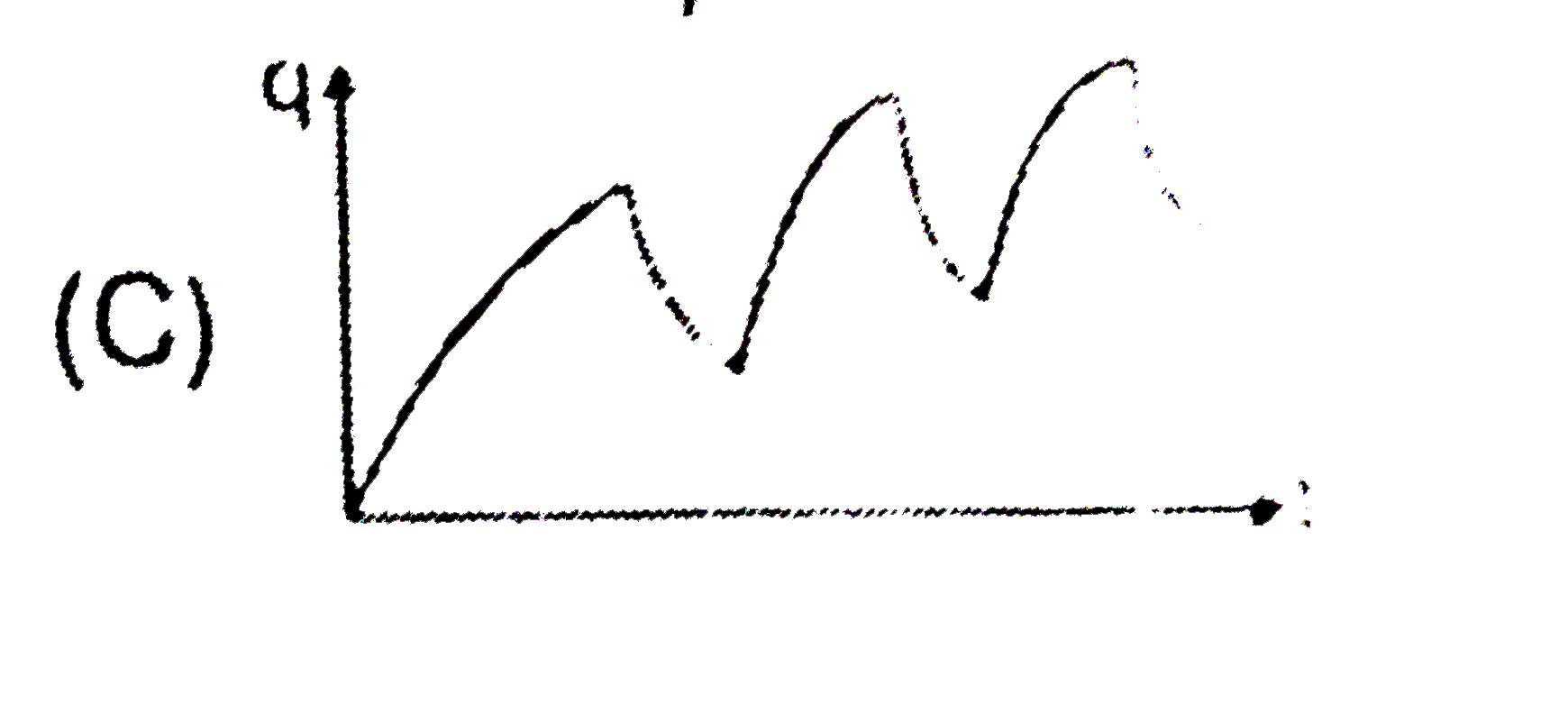In the shown circuit involving a resistor of resistance , capacitor of capacitance C farad and an ideal cell of emf E volts, the capacitor is initially uncharged and the key is in position 1. At t = 0 second the key is pushed to position 2 for seconds and then key is pushed back to position 1 for seconds. This process is repeated again and again. Assume the time taken to push key from position 1 to 2 and vice verse to be negligible.

Then the variation of charge on capacitor with time is best represented by




The correct Answer is:C
Step by step video, text & image solution for In the shown circuit involving a resistor of resistance R Omega, capacitor of capacitance C farad and an ideal cell of emf E volts, the capacitor is initially uncharged and the key is in position 1. At t = 0 second the key is pushed to position 2 for t_(0) = RC seconds and then key is pushed back to position 1 for t_(0) = RCseconds. This process is repeated again and again. Assume the time taken to push key from position 1 to 2 and vice verse to be negligible. Then the variation of charge on capacitor with time is best represented by by Physics experts to help you in doubts & scoring excellent marks in Class 12 exams.
Updated on:21/07/2023Topper's Solved these Questions
- CAPACITANCEBOOK - RESONANCECHAPTER - CAPACITANCEEXERCISE - Exercise - 3
26 Videos
- CAPACITANCEBOOK - RESONANCECHAPTER - CAPACITANCEEXERCISE - High Level Problems
16 Videos
- CAPACITANCEBOOK - RESONANCECHAPTER - CAPACITANCEEXERCISE - Exercise - 1
79 Videos
- ATOMIC PHYSICSBOOK - RESONANCECHAPTER - ATOMIC PHYSICSEXERCISE - Advanved level problems
17 Videos
- COMMUNICATION SYSTEMSBOOK - RESONANCECHAPTER - COMMUNICATION SYSTEMSEXERCISE - Exercise 3
13 Videos
Similar Questions
Knowledge Check
In the shown circuit involving a resistor of resistance RΩ, capacitor of capacitance C farad and an ideal cell of emf E volts, the capacitor is initially uncharged and the key is in position 1. At t = 0 second the key is pushed to position 2 for t0=RC seconds and then key is pushed back to position 1 for t0=RCseconds. This process is repeated again and again. Assume the time taken to push key from position 1 to 2 and vice verse to be negligible.

The charge on capacitor at t = 2RC second isACEBCE (1−1e)CCE (1e−1e2)DCE (1−1e+1e2)In the shown circuit involving a resistor of resistance RΩ, capacitor of capacitance C farad and an ideal cell of emf E volts, the capacitor is initially uncharged and the key is in position 1. At t = 0 second the key is pushed to position 2 for t0=RC seconds and then key is pushed back to position 1 for t0=RCseconds. This process is repeated again and again. Assume the time taken to push key from position 1 to 2 and vice verse to be negligible.

The current through the resistance at t = 1.5 RC seconds isAEe2R(1−1e)BEeR(1−1e)CER(1−1e)DE√eR(1−1e)In the circuit shown key is closed at t=0 with capacitor initially uncharged.
 ARate of increase of capacitors energy, just after the switch is closed is E2RBMaximum power supplied by the cell is E2RCAt t=RCIn2, capacitor is charged up to half of the energy stored by it in steady stateDAt t=RCIn2, potential difference across capacitor is same that across resistor.
ARate of increase of capacitors energy, just after the switch is closed is E2RBMaximum power supplied by the cell is E2RCAt t=RCIn2, capacitor is charged up to half of the energy stored by it in steady stateDAt t=RCIn2, potential difference across capacitor is same that across resistor.
A capacitor of capacitance C is given a charge Q. At t=0,it is connected to an uncharged of equal capacitance through a resistance R. Find the charge on the second capacitor as a function of time.
View SolutionThe circuit consists of two resistors (of resistance R1=20Ω and R2=10Ω), a capacitor (of capacitance C=10μF) and two ideal cells. In the circuit shown the capacitor is in steady state and the switch S is open

The charge on capacitor in steady state with switch S closed.
View SolutionThe circuit consists of two resistors (of resistance R1=20Ω and R2=10Ω), a capacitor (of capacitance C=10μF) and two ideal cells. In the circuit shown the capacitor is in steady state and the switch S is open

The current through the resistor R2 just after the switch S is closed is :
View SolutionTime constant of a C-R circuit is 2ln(2) second. Capacitor is discharged at time t=0. The ratio of charge on the capacitor at time t=2s and t=6s is
View SolutionIn the circuit shown, the capacitor is initially uncharged. The switch S is closed at t = 0. Time after which voltage across capacitor and resistor are equal is:

View Solution


